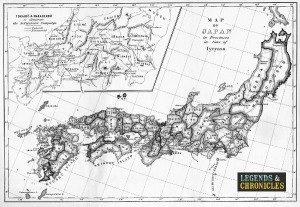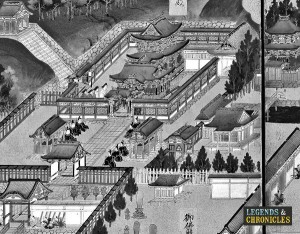Feudal Japan Periods
The feudal time of Japanese history is made up of three major periods including Kamakura period, Muromachi period and Azuchi-Momoyama period. These feudal Japan periods, very much military based, had different types of leadership and structures.
The Kamakura period
The Kamakura period (jidai) is the first major period in feudal Japan and it refers to the period that started in 1185, when Minamoto defeated the Tiara Clan in the Gempi War. However, it was actually 1192 that Yoritomo Yoshitsune was appointed as the first shogun, which some people would class as the official beginning of the Kamakura period. The period lasted until the wipeout of the Kamakura shogunate in 1333 – 141 years after its establishment. Some of the original members of the government include those from the Minamoto clan and the Fujiwara clan. The Kamakura period takes its name from the city where the first members of the shogunate were based in, today located within Kanagawa Prefecture, south of Tokyo. Kamakura became the capital city of Japan.
The Kamakura shogunate was very much military focused, with the shoguns acting as the heads of the government. This lead the samurai warriors, castles and what’s more feudalism to emerge in Japan. The word, shogunate, in the Japanese language is ‘bakufu’, which directly translates to tent government, also meaning where the soldiers live in. This perfectly explains the Kamakura shogunate’s position as a military government.
The most important and notable events during the Kamakura period, without a doubt, were several attempt invasions by the Mongols in 1274 and 1282, which were both led under Kublai Khan, which both failed. Both of these attempts failed due to a typhoon destroying a significant number of its army. These events made the Japanese people very confident of the country’s strength. The Kamakura period ended in 1333 when Nitta Yoshisada conquered the city.
The Muromachi period and the Ashikaga period
The Muromachi period, also known as the Ashikaga period, is the second period of feudal Japan and was officially established in 1336 after the destruction of the Kamakura shogunate. The era ended in 1573. Ashikaga Takuji was the first shogun in the Muromachi period. As with the previous era, the name of the period was taken from the location the government was based in; Muromachi district in Kyoto, Furthermore, the capital city of Japan reverted back to Kyoto as a result of the beginning of the Muromachi period.
One of the things that the Muromachi period is well known for is its significant number of civil wars and feuds. Because of this, a great number of temples and other important buildings were destroyed during this period.
Although the Muromachi period was still seen as a period of military government, the people started showing more interest in other things, such as tea ceremonies, renewed interest of the shinto religion, influences from the western countries and the obsession of displaying their wealth. People believe this was one of the main reasons why there were so many civil wars as people blamed the Ashikaga bakufu for not paying attention towards taking control of Japan. Some of the notable civil wars from the period include the Battle of Kawagoe, the Battle of Miyajima and the Battle of Okehazama. The government in this period was, therefore, seen as not as strong as the shogunate in the previous Kamakura era. The Muromachi bakufu was ended by Oda Nobunaga in 1573, who took control of the whole country of Japan.
The Azuchi-Momoyama period
The Azuchi-Momoyama period is the era that followed Muromachi period. It refers to the period between 1573 and 1600. This short era led by Oda Nobunaga and Toyotomi Hideyoshi, is seen as a significant change to the Japanese society from the medieval to more modern approach. For example, they started seeing more interest in outside Japan, which led to the rise of the power of merchants as the economy grew.
Edo period and the Tokugawa period
After Hideyoshi died in 1598 and Ieyasu won the Battle of Sekigahara, the Azuchi-Momoyama period ended in 1602, the Edo period started in 1603. The edo period continued until 1865 when the Meiji period began. The capital was moved from Kyoto to Tokyo, which still remains the same today. It is also known as Tokugawa period as the country was controlled under the Tokugawa shohunate, also known as Edo shogunate, who was the last feudal Japanese military focused government in Japan.
The Tokugawa family stabilised the country by building a structured social classes and hierarchies. Edo period is also known for its large economic development including the increase of foreign trades, the increase of handcraft and agricultural industries, art, technology and building of a significant number of roads. One of the painting techniques developed in the Edo period is Ukiyo-e woodwork print, with great artists including Katsusika Hokusai.

